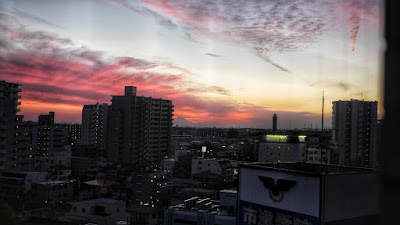Japan Report Six 令和5年
From Bujinkan Santa Monica by Michael
I was invited to Furuta Sensei’s home dojo out in the countryside. He is very generous and picked us up from the train station. The only problem is that he plays a Lady Gaga CD on repeat during the drive.
Furuta’s home dojo is very rustic with traditional tatami mats. He started training with ukemi and my cotton tabi really slid across the straw! His exploration of 基本八法 Kihon Happō is influenced by his study of 雲隠流 Kumogakure Ryū. As the next Soke of Kumogakure Ryū, he is hard at work learning and studying this school. And I feel lucky to be part of this journey every time I study with him.
At one point he showed a detail of how to attack the 急所 kyūsho 血止 chidome and 血ダメ chidame. The name of this kyūsho means to stop the blood. Obviously this would incapacitate an opponent if you pull it off. But Furuta Sensei used a hooking strike into chidome to unbalance with one finger.
The kyūsho becomes a 支点 shiten. The pressure creates a pivot or a fulcrum to affect the opponent’s structure. Studying the kihon in this way to find shiten within them will really transform your understanding of taijutsu.
My luck continued when Furuta Sensei pulled out the pole weapons. First up was a 刺股 sasumata. This had been on everyone’s mind because of a viral video where a security guard in a Tokyo jewelry store fought off three smash and grab robbers with a sasumata.
Furuta brought out a heavy iron and antique looking sasumata. I had never trained with one before. He used it against a sword and a 長巻 nagamaki. He used the hook to lock up the attacker’s blade. The sheer weight of the iron can swing like a pendulum grounding the opponent and his weapons.
Furuta Sensei also shared some yari. We studied with 片鎌槍 katakama yari, 三角槍 sankaku yari, and 管槍 kuda yari. These were live blades so we had to be very careful in his small dojo. The kuda yari was so long I had to thrust out the open door from the dojo into the garden!
I had little prior experience with some of these weapons. But this is the kind of opportunity that arises if you form good relationships with the teachers in Japan. Then they’ll share things with you that not many people get to study.
Furuta continued his generosity after training by taking us on an excursion. First we went to lunch at 末廣 Suehiro, which is a restaurant frequented by Hatsumi Sensei. Then we listened to more Lady Gaga as we drove to 夢楽堂 Murakudō for some shopping.
Hatsumi Sensei also likes to shop at Murakudō, an antique store packed to the rafters with many things, including weapons. My teacher, Peter was looking for 矢の根 yanone as you may have seen in my Japan Report Three 令和5年 video. Another member of our group bought a sword. And people were looking at tsuba, tessen, yari and even a nice 仕込杖 shikomi-zue. I had trouble guarding my wallet.
After the shopping, I went back to Noda-shi for an evening class with Paul Masse at the Honbu Dojo. Paul began with a form of 手解 tehodoki. But this was just an excuse to explore more themes related to 支点 shiten.
He raised his forearm to create support under the attacker, then he dropped it away. This caused the opponent to stumble and expose other weak points. He added in knife techniques, but all through the class he was creating shiten then throwing them away.
Having personal relationships with the teachers here makes my visits feel like family. Then the training feels like sharing. And no matter how long my days are, I always come away energized and excited for the next day’s training.
If you like what I do, you can support my writing and video productions by signing up at Rojodojo.
Then you can watch the FULL video of this report here
https://www.rojodojo.com/japan-report-six-reiwa-5/ along with more than 400
other training videos
…



